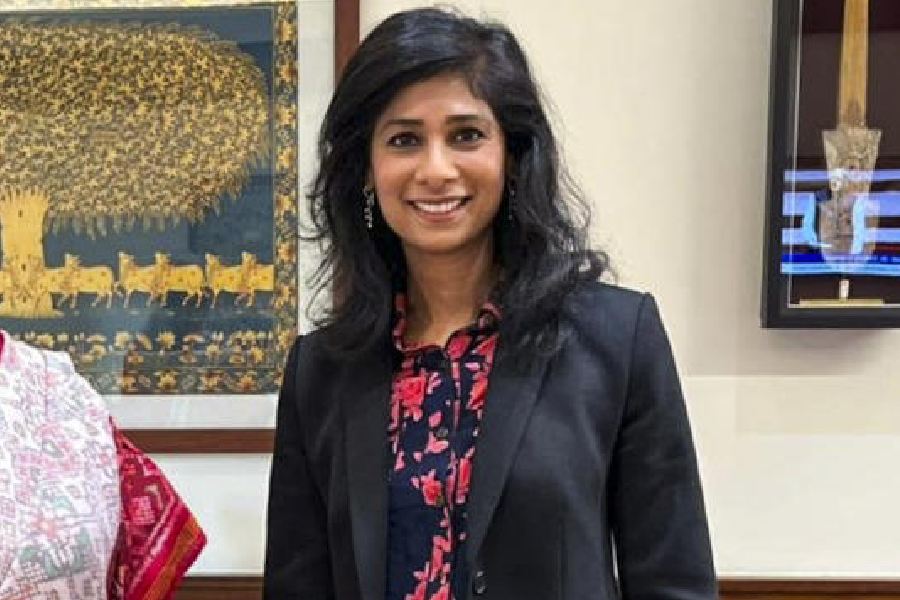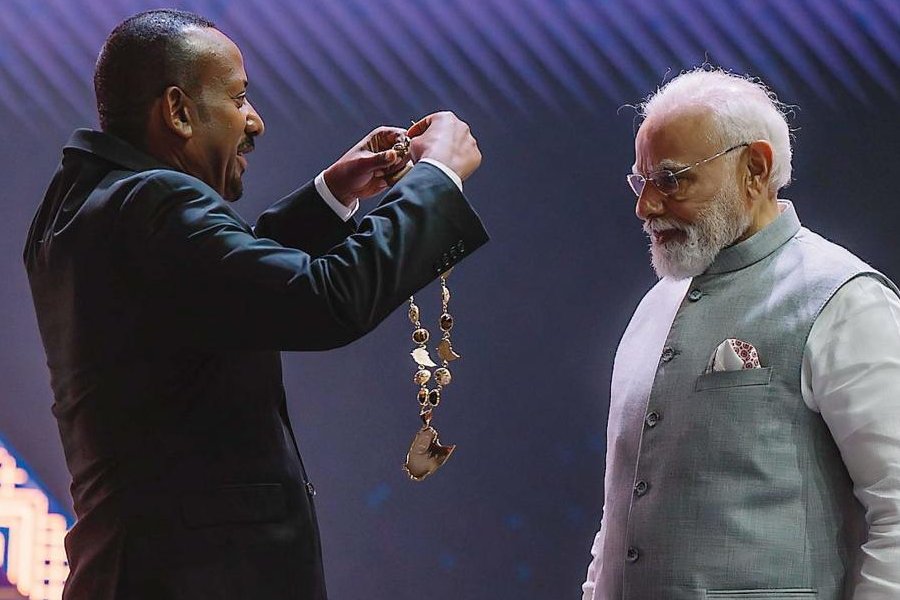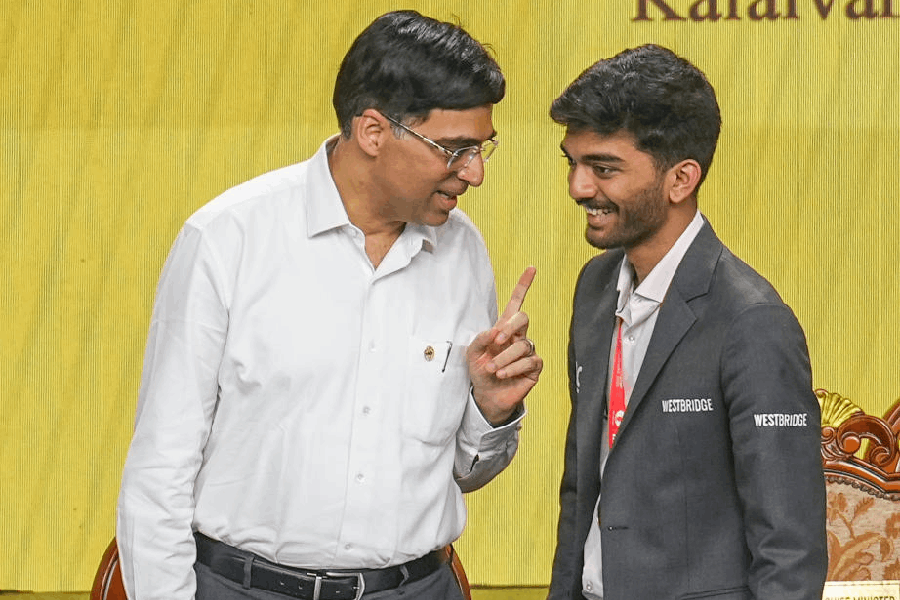 |
It was a scene from a film she saw as a child: Nimmi was dancing and singing in the fields and the camera was finally closing in on Dilip Kumar, dressed as a prince, riding a horse. “The field, the horse, Dilip Kumar… it was the moment,” laughs Nasreen Munni Kabir. “I knew then that I wanted to work in films.”
We are sitting in Kabir’s charming flat in London’s Maida Vale. Among the paintings and posters on the wall are a lovingly framed set of postage stamps of director Guru Dutt (the subject of one of her acclaimed books) and another of The Beatles. Munni — as her friends call her — is an avid collector, of film posters, postage stamps and postcards.
Since we are meeting on a Sunday, she has suggested we chat over a light lunch and has already stirred up a delicious meal by the time I reach. Among her other talents, Kabir is an excellent cook. She is also a prolific writer. Her latest book of conversations with A.R. Rahman — A.R. Rahman, The Spirit of Music has already sold over 20,000 copies since its release in April.
Kabir, 62, who made her mark in Britain with the popular programme Movie Mahal telecast in Britain in the Eighties, started discussing her book with Rahman when she was filming The Making of Bombay Dreams in 2002 for the BBC. The famously reclusive musician agreed, and interviews were recorded over a few years as they met on various occasions. The momentum picked up over the last three years, but the most valuable material came literally in the last few weeks.
“He was in LA and I was in Mumbai. It was late night for him so he could not be disturbed and early morning for me, so I was fresh. We would talk on Skype and he spoke about his personal struggle for his art.” In the book Rahman reveals that when he first got a studio, his mother had to sell her jewellery to help him because he had no money.
Interviewing Rahman, she now recalls, was always an adventure. One day when they were driving up Oxford Street in London in a black cab heading for Kentish Town, he spotted the Virgin music store and jumped out at the traffic lights saying he wanted to buy some music.
“He was gone before I knew it,” laughs Kabir. “The cabbie was totally surprised and asked me, ‘Now where do you want to go?’ I wasn’t fast enough to jump out as well, so I just carried on! But he did later make it there,” she says. “That’s what it was always like with Rahman. You could be planning something but end up somewhere totally different.”
What strikes her about Rahman is his fondness for the ordinary things of life — walking in Regent’s Park, eating an ice cream, flopping down on the grass and watching people go by. And what she remembers particularly about actor Shah Rukh Khan is the way he handles his fans, a trait she noticed while shooting for her 2005 documentary Inner and Outer World of Shah Rukh Khan in the United States. “Shah Rukh is always very gentle with his fans. He is never rude and never brushes them off. Amitabh Bachchan is like that too.”
Bachchan once told her that when he was young he had once spotted Dilip Kumar in a restaurant. “He walked up to him because he really wanted his autograph. But Dilip Kumar sent him away. Shah Rukh too had once gone up to Imran Khan and asked for an autograph and Imran had refused,” she recalls.
Cinema, clearly, is the world that Kabir lives in. Ensnared by Nimmi and Dilip Kumar in the 1952 film Aan, Kabir’s passion has been an enduring one. She remembers how she would go to see films as a child with her botanist father S.A. Kabir and mother, Athiya Bano, in London. Kabir, who now spends the winter months in Mumbai and returns to London in spring, was born in Hyderabad, but moved to London with her family in the Fifties.
When she was 17, she relocated to Paris, where she found work as a trainee assistant with director Robert Bresson, who was then directing Four Nights of a Dreamer. “I knew so little and it was wonderful to work for a master like him,” she says. “But I quickly realised that I was not cut out for fiction. I needed to touch reality and I decided I would go for documentaries.”
While in Paris she was asked to help organise a festival of Third World films. Only three people turned out for the festival in 1978 — but her effort got noticed. She went on to organise two more festivals between 1983 and 1985 at the Pompidou Centre in Paris. She invited masters such as Satyajit Ray and G. Aravindan, along with actors Smita Patil, Shabana Azmi and Bachchan.
“The Pompidou Centre was houseful for every show. The festival was a huge success,” she recalls enthusiastically.
Kabir personally looked after Ray during the festival, describing him as “fantastically impressive, incredibly polite and completely charming”. He would later tell her that the best sub-titled version of his films were the ones she had done in London.
In the midst of all this, she started giving shape to her Movie Mahal series. In 1981 Kabir was contacted by Channel Four television to produce documentaries on Indian cinema. She canned 80-100 interviews with people such as musician Naushad, lyricist Majrooh Sultanpuri and actors Dev Anand, Johnny Walker and Nadira.
The following for the show — telecast for two seasons till 1989 — was huge. Every Sunday at 9.30am Asians would spend an hour watching film clips and songs along with interviews put together with Kabir’s characteristic sense of style and gentle humour. Viewership went up to 4,00,000, a record for Indian eyeballs on British television.
Soon documentaries followed — on Guru Dutt, singer Lata Mangeshkar and actors Bachchan and Shah Rukh. She is particularly proud of a 2003 documentary on shehnai exponent Bismillah Khan for the BBC. In 2009 Channel Four did a special 75-minute 20th anniversary film on Movie Mahal — called The Golden Years of Indian Cinema — directed by Kabir.
Then there were her books. In 1996 publisher Rukun Advani persuaded her to put pen to paper and write about Guru Dutt. Guru Dutt — A Life in Cinema was the first biography of the actor-director. Yours Guru Dutt, a collection of his letters, followed a few years later.
Preserving the history of cinema is a priority for Kabir. The passion has prompted her to take up the painstaking job of transcribing the dialogue of some classic Hindi films and publishing them with Hindi, Urdu and English translations. She has published the dialogue of Mughal-e-Azam, Awara, Mother India and Pyaasa and plans two more in the series, Guide and Bimal Roy’s Devdas.
“I deeply regret the lack of archiving in the Indian film industry,” she says. “Prints are in poor shape, interviews are not preserved.” She is hoping the British Film Institute will give her space to keep her entire collection of interviews, film footage, posters and movie memorabilia, to be used by future students of Indian cinema. She is awaiting sponsors who can fund the project and ensure that the collection is not lost to posterity.
Kabir has also done a series of biographical conversations with industry veterans such as lyricist Javed Akhtar and Mangeshkar. Lata Mangeshkar, In Her Own Voice recounts how a young Maharashtrian girl, trained in classical music and who spoke little Hindi, sang her way to becoming a legend.
In all of these, what fascinated Kabir was getting to know how her subjects worked and what it was that made them such iconic figures or trend setters. “I was never really interested in grilling them about their private lives. I am a private person myself. I would not do to them what I would not like done to myself.”
Essentially a shy and private person, Kabir, in fact, was tongue-tied when she met one of her favourite actors, Nargis, in 1981. “I was in Mehboob Studios (in Mumbai) and she came on the sets for Sanjay Dutt’s Rocky. I was dying to talk to her but I didn’t have the guts to go to her. I didn’t say a word,” laughs Kabir.
We go back to Dilip Kumar. Kabir remembers a time when she was 14 or 15 and was standing at the Ritz hotel in Hyderabad on the first floor when she saw the actor checking in. She was glued to the railing watching him and he looked up and saw her. “He indicated to me to come down. I literally flew down the stairs! He asked me my name. Years later when I was interviewing him, I told him about the incident and asked if he remembered. He smiled, thought and then admitted: “Maybe not, maybe not.”
But Kabir remembers him well. After all, it all started with Dilip Kumar.










